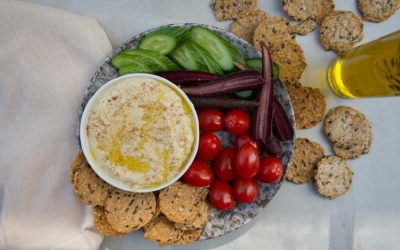Over the past few weeks, we’ve been exploring fats, from lab-grown “carbon butter” to the long-standing debate about whether saturated fat really deserves its bad reputation. This week, I want to stay with the theme of fats but turn to a very different kind, one you can’t see on your plate. It’s called butyrate, a short-chain fatty acid made in your gut when you eat fibre.
Why talk about it now?
Because as October begins, many of us feel the seasonal shift in our energy. The mornings are darker, the days shorter, and it can be harder to stay motivated. Supporting your gut health, and specifically your butyrate production, could be one of the most overlooked ways to steady energy and resilience as we move into autumn.
What Exactly Is Butyrate?
Butyrate is made when the friendly bacteria in your gut ferment dietary fibre. Think of it as fuel for your colon cells and a natural energy supply that helps keep your gut barrier strong and resilient. When your gut lining is healthy, it not only supports digestion but also helps to regulate your immune system, reduce inflammation, and even influence your mood and mental clarity through the gut-brain axis.
Low levels of butyrate are linked with conditions such as IBS, insulin resistance, and even mood disorders. On the other hand, higher levels are associated with better blood sugar control, healthier cholesterol levels, and stronger protection against inflammation.
How to Boost Butyrate Naturally
Butyrate is mostly produced by your gut bacteria when they ferment dietary fibre, but a few foods contain it naturally, such as grass-fed butter and ghee. These can contribute small amounts directly, though the bulk of your butyrate will come from a fibre-rich diet.
Key fibre sources include:
- Vegetables such as leeks, onions, asparagus, and leafy greens
- Legumes like lentils and chickpeas
- Resistant starch sources such as green bananas, cooked-and-cooled potatoes, and oats
- Fermented foods like sauerkraut, kimchi, and kefir
A diverse diet rich in plant foods encourages a diverse microbiome and, in turn, promotes increased butyrate production.
Supplements That Can Help
For some individuals, particularly those with compromised gut health or low fibre intake, supplementing directly with sodium butyrate can be beneficial. This provides butyrate in a form your body can use straight away, bypassing the need for fermentation.
Another supportive option is taking a broad-spectrum probiotic to encourage the growth of bacteria that produce butyrate. Pairing probiotics with prebiotics (the fibres they feed on) is a practical approach.
October Energy: A Gut-First Approach
As autumn routines settle in, it’s worth remembering that energy doesn’t just come from caffeine or quick snacks, as we also discussed recently. It begins deep in the gut, where short-chain fatty acids like butyrate fuel your cells, balance blood sugar, and reduce the kind of low-grade inflammation that quietly drains vitality.
This October, think of butyrate as your invisible ally. By feeding your gut with real, fibre-rich foods, and supporting it when needed with smart supplementation, you can build a stronger foundation for steady energy, clearer thinking, a stronger immune system and resilience through the darker months ahead.




